Foods with the highest calcium content. What foods contain calcium
It is no secret that calcium is vital for strengthening and maintaining bones and teeth. This mineral is involved in the regulation of blood pressure, in the transmission of nerve signals, supports the elasticity of blood vessels and performs a number of functions in the body to ensure the normal operation of all systems of the human body.
Calcium is the most common mineral in the human body. Its share is more than two percent of total body weight. Throughout his life, he must regularly enter the body and be at an optimal level. Although now there are many dietary supplements with calcium, but still according to doctors and nutritionists, the best way to get it with food.
There are many products that contain this important for human health mineral. The best sources are milk and dairy products. But many people have lactose intolerant milk protein intolerance. In this article you will find out where else calcium is contained, in which products it can be found.
Calcium-rich foods
Many foods contain calcium. In addition to dairy products, calcium is also found in many other foods: green leafy salads, nuts, fish, and some vegetables, especially green.
Many studies estimate that, on average, about 70 percent of people get calcium from milk and products at its base. Vegetables, grains, legumes, meat and fish also occupy a certain place in enriching our body with this essential element.
Some food manufacturers enrich their products with calcium. But how much the contribution of such products is currently unknown.
For most people, if they drank 3 cups of milk a day, taking into account calcium intake from other products, this amount would be quite enough. However, for many reasons, many people avoid consuming milk and dairy products. Such people should find an alternative substitute for them to maintain the necessary balance of calcium in the body. This is especially true of vegans.
Calcium in milk and dairy products
Dairy products such as yogurt, cottage cheese, cheese, dairy products, for many people remain the best sources of calcium. In addition, calcium in them is contained in the form in which the body can freely absorb and assimilate them.
Although homogenized and pasteurized milk has more calcium, but it is absorbed worse. The disadvantages of dairy products include a high content of toxins in them, such as growth hormones, antibiotics.
Whole milk, with a milk fat content of up to 4 percent, is recommended for children one and two years old. Adults and children over two years old should drink milk with lower fat content: from 1 to 2 percent, or skimmed milk and dairy products. Removing fat does not reduce the amount of calcium in them.
Yogurt, most cheeses, whey are excellent sources of this valuable mineral.
In addition, milk is a good source of phosphorus and magnesium, which help absorb and absorb calcium.
Vitamin D is necessary for the body to absorb calcium, so they often enrich dairy products.
Goat milk is also a good source of calcium.
Other sources of calcium
In addition to dairy products, there are other sources. These include:
Green leafy salads: leaf mustard, spinach, arugula, etc.
Vegetables: broccoli, kale, turnip, Chinese cabbage;
Fish: salmon, sardines and others;
Nuts: sesame, Brazil nut, sunflower seeds;
Coma is also a lot of calcium in orange juice, tofu cheese, soy milk.
Small sesame seeds can be attributed to the champions in the content of calcium and other nutrients. There are almost 1000 mg per 100 grams of seeds. Tahini paste, where the main ingredient is sesame, contains 426 mg of calcium per 100 grams. In addition, sesame goes well with many other products. Just add them to the salad, sprinkle with fish or meat, cakes. 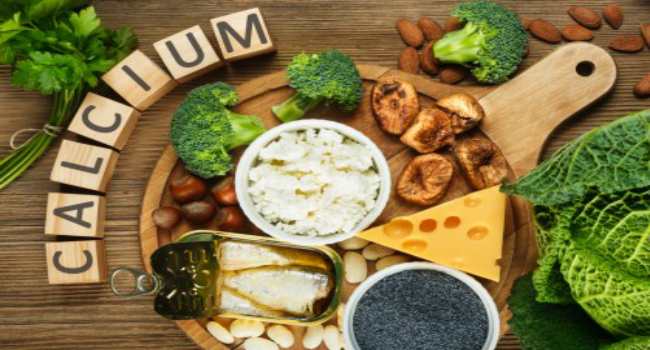
Many people have heard about the benefits of chia seeds, but do not know that 100 grams of these seeds can give our body nearly 630 mg of calcium.
Greens, leafy green salads (the darker, the more calcium), vegetables - an excellent source of calcium. Among these representatives in the first place goes spinach. A portion of bok choy cabbage can give more than 150 mg, and leaf mustard - more than 100 mg.
One cup of freshly squeezed will replenish the body with 72 mg of calcium, not to mention the large amount of vitamin C, which helps the absorption of calcium. In addition, oranges are an excellent source of potassium, vitamin A and beta-carotene.
While exotic for us, quinoa (quinoa) offers us from 60 to 100 mg of calcium, plus a large amount of potassium, zinc and healthy protein.
And the familiar beans may contain, depending on the grade (color), more than 400 mg of calcium per 100 grams.
Broccoli cabbage contains about 74 mg of calcium and 120 mg of vitamin C, which helps the body to adsorb it. In addition, it contains a lot of dietary fiber, vitamin K, A, folic acid.
Five pieces of dried figs will replenish the body with almost 135 mg of calcium. A lot of it in almonds, Brazil nuts. Rich in this element and the oils of these nuts.
Not only fresh, but also dried herbs contain calcium. Do not forget to add rosemary, mint, sage, basil, parsley, dill, oregano and other spicy herbs to your dishes.
Calcium-containing preparations
Calcium is found in many multivitamin supplements. Its amount in them may vary depending on the specific supplement.
There are vitamins that can only contain calcium or calcium with other nutrients, such as vitamin D.
The most accessible forms of calcium in preparations include calcium citrate and calcium carbonate.
Calcium citrate is a more expensive type of supplement. It is absorbed by the body when it is taken on an empty or full stomach.
Calcium carbonate is less expensive. It is better absorbed if taken with food.
In addition, dietary supplements and calcium multivitamins can include calcium lactate and calcium phosphate.
Calcium absorption is best when taken in an amount of no more than 500 mg at a time.
Vitamin D and calcium. Why vitamin D is important
Vitamin D is necessary for the body to effectively absorb calcium. Unlike other vitamins, we do not need to get it from food. Most of the vitamin we have is produced by our own organs when exposed to sunlight. This is good, because in most products it does not exist or there is a very small amount. Foods that contain vitamin D are:
- Oily fish (for example, sardines, herring, trout, tuna, salmon or mackerel);
- Fortified foods (this means that vitamin D is added to these foods), such as margarine, some cereals, milk and dairy products.
Especially important is the intake of vitamin D during the winter. Some people are at risk of deficiency of this vitamin and should take it throughout the year.
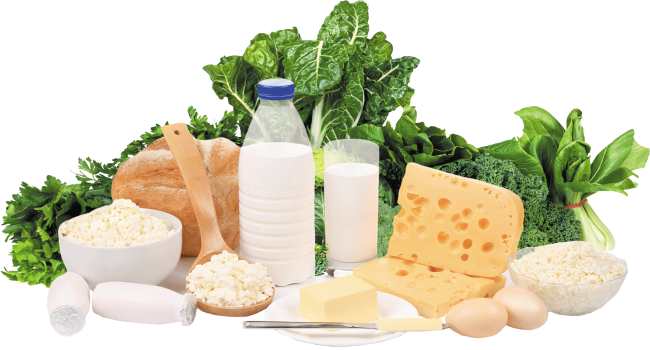
How much calcium do we need?
Adults over the age of 18 require about 700 mg of calcium per day. There are other circumstances in which more calcium is needed. It may be:
- Children age 9-18 years old - 1300 mg, children aged 4-8 years need about 800 mg per day;
- Breastfeeding - 1250 mg;
- Patients with celiac disease or Crohn's disease, with ulcerative colitis - from 1000 mg to 1500 mg;
- Men and women over the age of 55 - 1200 mg;
- With osteoporosis or susceptibility to this disease - 1000 mg.
If you are undergoing treatment for osteoporosis with drugs such as alendronic acid, then it is especially important that enough calcium is in the body. Otherwise, the effect of treatment is reduced to zero.
You also need to make sure that you get enough calcium if you have a low level of this element in the blood (hypocalcemia) or you are taking medications that interfere with the absorption of calcium and flush it out, such as steroids.
One of side effects when taking steroid drugs for a long period (more than 3 months), there is an increased risk of osteoporosis.
There is some evidence that increased sodium in the diet, usually in the form of salt, may increase the excretion of calcium from the body. The most reasonable thing in this case is to reduce salt intake. Excessive consumption of coffee can also contribute to leaching, which can lead to its deficiency.
Side Effects and Overdose
According to doctors and nutritionists, most people do not receive the required amount of calcium from food. 90 percent of people at risk of calcium deficiency cannot reach the daily recommended rate. Therefore, the fact of overdose is unlikely among adults.
According to the US Food Administration Administration, acceptable upper calcium levels are:
- 0-6 months - 1000 mg
- 6-12 months - 1500 mg
- 1-3 years - 2,500 mg
- 4-8 years - 2,500 mg
- 9-13 years old - 3000 mg
- 14-18 years old - 3000 mg
- 19-30 years - 2,500 mg
- 31-50 years - 2,500 mg
- 51+ years - 2000 mg
- Pregnant and lactating women (under 18) - 3000 mg
- Pregnant and lactating women (over 18) - 2500 mg
In order for a middle-aged man to exceed this daily calcium intake limit of 2.5 thousand milligrams, he must eat about 10 cups of spinach or greens. Rarely will every day consume about 6 cups of yogurt, which are needed for the maximum allowable rate.
There is a condition called the lactic-alkaline syndrome, which can cause severe dehydration due to excessive calcium intake. This condition is almost always caused by taking calcium supplements or calcium-containing antacids. Such a risk exists when taking dietary (from foods) calcium above 2000 mg per day. However, as noted earlier, a consumption of 2,000 milligrams of food is still unlikely.
People with existing health problems, such as kidney disease or a particular risk of such problems, fall into a special category. So people taking high doses of dietary supplements (multivitamins) calcium may increase the risk of heart disease, but this does not apply to food.
Therefore, if we talk about an excess of calcium in a particular person, then he will most likely be associated with health, and not with calcium intake from food.
Before you take additional calcium with food supplements, you should consult with your doctor to determine the rate of intake, corresponding to the state of health.
Calcium Rich Food Table
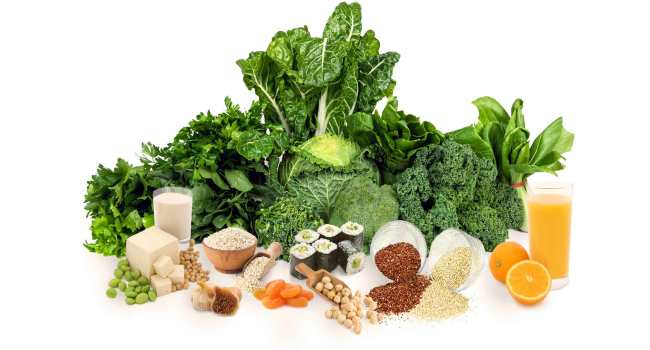
In this table you will find a list of the most commonly used products for most people.
| PRODUCTS | A PORTION | CONTENT OF CALCIUM, MG |
| milk products | ||
| Milk (any) | 200 ml | 240 |
| Goat milk | 250 ml | 345 |
| Yogurt | 125 grams | 200 |
| Cheddar cheese | 30 grams | 216 |
| Soft cheese (triangle) | 15 grams | 100 |
| Cottage cheese | 100g | 73 |
| Ricotta cheese | 125 grams | 269-356 |
| Ice cream | 60 grams | 78 |
| Custard | 120 grams | 150 |
|
a fish |
||
| Sardines (atlas) | 75 grams | 286 |
| Sprat | 100g | 340 |
| Haddock | 150 grams (fillet) | 150 |
| Salmon canned | 75 grams | 179-212 |
| Trout | 100g | 20 |
| Canned mackerel. | 75 grams | 181 |
| Sardine pikhokeansk. | 75 grams | 180 |
| Cod | 100g | 25 |
| Anchovies | 75 grams | 174 |
| Squids | 100g | 40 |
| Shrimp | 100g | 90 |
| Crab meat | 100g | 100 |
|
vegetables |
||
| Green salad | 100g | 200 |
| Fresh spinach | 100g | 150 |
| Spinach cooked. | 125 grams | 129 |
| Broccoli | 50 grams | 30 |
| Cabbage | 50 grams | 65 |
|
other |
||
| White mushrooms dried. | 100g | 184 |
| Fresh white mushrooms | 100g | 30 |
| Whole wheat bread | 100g | 55 |
| Pic | 100g | 33 |
| Buckwheat | 100g | 21 |
| Cornflakes | 100g | 43 |
| Oatmeal | 100g | 50 |
| Chickpea | 100g | 45 |
| Peas | 100g | 50 |
| Beans | 100g | 194 |
| Olives | 100g | 85 |
| Chicken eggs | 100g | 58 |
| Dried figs | 60 grams | 150 |
| Melon | 100g | 170 |
| Orange juice | 250 ml | 300 |
| Basil | 100g | 370 |
|
the nuts |
||
| Soya beans | 100g | 240 |
| Soy milk | 200ml | 240 |
| Tofu cheese | 100 | 500 |
| Soy yogurt | 175 grams | 206 |
| Sesame | 100 | 780 |
| Sunflower seeds | 100 | 100 |
| Halva sunflower | 100 | 91 |
| Almond | 100 | 250 |
| Hazelnut | 100 | 175 |
| Walnuts | 100g | 90 |
| Brazilian nut | 15 grams | 26 |
| Chocolate | ||
| Dark chocolate | 100g | 60 |
| White chocolate | 100g | 280 |
| Milk chocolate | 100 | 220 |
As can be seen from the above and far from complete table, although dairy products are considered to be the richest in calcium content, there are others in which it is not less and that can replace them to people who have intolerance to milk protein. A good alternative to supplement your diet is taking dietary supplements.
Neither one other chemical element useful for the organism, ordinary citizens are not as well aware as calcium. Since childhood, we are told that this is the basis for the structure of bone tissue. Calcium deficiency is dangerous brittle bones and cartilage. The probability of injury from an athlete is several times higher than that of an ordinary person, so the issue of calcium balance is particularly acute for them. It is especially important for them to consume foods that contain calcium.
The importance of calcium for athlete's health
The most important functions of calcium, especially relevant for people involved in sports are the following:
- The strength of bones, teeth, joints.
- Providing muscle contraction.
- Participation in protein synthesis.
- Transmission of nerve impulses.
- Participation in the process of blood clotting.
- Ensuring well-coordinated work of the immune system.
- Together with magnesium to ensure proper functioning of the heart and blood vessels.
Calcium is flushed out of the body during physical exertion and excessive sweating.
Features of the absorption of calcium by the body
Calcium is one of the most difficult to digest elements. First, it is from the digested in the stomach of food dissolved in the hydrochloric acid of gastric juice. Then, under the action of bile, it becomes easily digestible and begins to be absorbed through the intestinal walls. Diseases of the stomach associated with its low acidity significantly inhibit the splitting of calcium compounds.
Calcium absorption is reduced by certain substances found in sorrel, beets, spinach, rhubarb, and chocolate. They need to be eaten separately from calcium-containing products or dietary supplements.
Alcohol, excessive use of tea, coffee, carbonated beverages impair calcium absorption and accelerate its elimination from the body.
The excess in the diet of animal fats impairs calcium absorption, and lactose (milk sugar), on the contrary, contributes to this. Vitamin D, an amino acid of plant-derived proteins, accelerates calcium absorption.
It is important to maintain the balance of magnesium, sodium, calcium, potassium and phosphorus in the body. An excess of sodium leads to accelerated leaching of calcium. Excess phosphorus binds to calcium in the form of insoluble salts. Calcium begins to perform some functions of magnesium with a lack of the latter. A sufficient amount of potassium keeps calcium in the body.
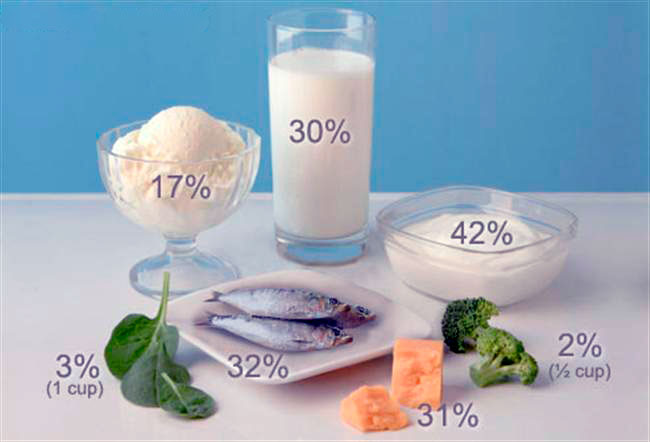
Calcium-rich foods
Calcium-containing foods |
Calcium content, mg per 100 g of product |
| The nuts | |
| Poppy | 1500 |
| Sesame | 800 |
| Almond | 250 |
| Hazelnut | 170 |
| Pistachios, walnuts | 130 |
| Milk and dairy products | |
| Hard cheese | 800-1000 |
| Cheese, processed cheese | 500 |
| Ice cream, fat cottage cheese | 150 |
| Yogurt, fatty kefir | 120 |
| Milk | 120-150 |
| Greenery | |
| Young nettle | 700 |
| Basil | 370 |
| Parsley | 240 |
| Cress Salad | 210 |
| Dill | 130 |
| Green onions | 100 |
| Marine bioresources | |
| Seaweed | 1000 |
| Sardines in oil | 400 |
| Salmon | 200 |
| Boiled shrimp | 100 |
| Wholemeal Bread | 300 |
About 30% of calcium is absorbed from dairy products, 20% from nuts, almost 50% from greens, almost 80% from whole-grain bread.
Some foods today are specially enriched with calcium. So 1 cup of enriched soy milk contains 500 mg of calcium, yogurt - 400 mg, orange juice about 300 mg.
Vitamin-mineral complexes containing calcium
Due to the low degree of digestibility of calcium from food, it is difficult to ensure its proper intake in the body. Special calcium-containing preparations come to the rescue in this case.
It is more expedient to purchase combination preparations with calcium:
- Magnesium Calcium Complex Cal Apatite with Magnesium (550 mg of calcium).
- The same amount of calcium contains the complex with vitamin D Natekal D3 from Italfarmaco s.p.a.
- Calcium-D3 Nycomed contains 500 mg of calcium and vitamin D.
- Chewing calcium with vitamins C and D from the manufacturer Coral Club (500 mg of calcium).
- Calcium Magnesium from NOW (500 µg magnesium, 1000 mg of calcium).
- Natures Plus Mega-Mins contains 500 mg of calcium and 250 mg of magnesium
- Kalmag from Vitaprom (400 mg of calcium and 200 mg of magnesium).
Vitamin-mineral complexes containing calcium that are popular among athletes:
- Universal Nut's Animal Pak contains 2000 mg of calcium, as well as most of the important vitamins and minerals in athletic-oriented dosages.
- MegiCal from the manufacturer Coral Club contains 1300 mg of calcium, 600 mg of magnesium and other essential vitamins, micro, macronutrients.
- The 7 PLUS mineral complex from NPH ECHO CJSC includes 500 mg of calcium, as well as magnesium, potassium, iodine, zinc, and other minerals.
- 250 mg of calcium contains the Multi Mineral Caps complex, which is rich in vitamins and minerals from the American company Twinlab, Spectramin from Vitamax, Calcium Magnesium Chelate from NSP, Astrum Bone-Aid from Astrum.
The choice of a suitable complex containing calcium should be entrusted to a specialist. The range of dietary supplements is huge, they differ in the list and quantity of useful vitamins and minerals. It is important to take those supplements that are perfectly balanced for your needs. Maintain your health!
As you know, in the human body are balanced and interrelated various metabolic processes. Regular consumption of foods containing calcium is important for the health of bone tissue, teeth, optimal functioning of blood vessels, muscles, skin and brain.
Calcium properties
Receipt of calcium in sufficient quantities, especially necessary for bones and teeth. In addition, a useful macro element is involved in cellular metabolic processes, important for optimal muscle activity, coordination of movements. It eliminates reduced blood clotting, has anti-inflammatory effect, supports the nervous system.
In the case of an unbalanced diet, the presence of certain diseases, the body is forced to extract calcium from bone tissue, including in order to satisfy the need for additional energy. This happens when calcium metabolism is disturbed, when the body is chronically dehydrated. As a result, develops osteoporosis, bones become porous, prone to fracture.
A sufficient intake of foods rich in calcium, increases the body's resistance to infections, sharp temperature changes in climate, reduces the permeability of blood vessels, reduces the likelihood of high blood pressure.
Macroelement cleans blood vessels, helps to eliminate cholesterol plaques. The formation of lime deposits on the walls of blood vessels is often associated with excess consumption of foods rich in calcium. In fact, all kinds of diseases are caused by the inorganic type of element. Eating natural food without heat treatment contributes to the preservation and maintenance of health.
What Causes Calcium Deficiency

Sufficient physical activity contributes to the absorption of macronutrients from food and the transition to bone tissue. Therefore, athletes, physical culture workers, engaged in regular physical labor, extract a larger quantity of macronutrient from food. Deficiency is more often found with a sedentary lifestyle.
On the other hand, muscle tension, visiting a bath or sauna leads to inevitable perspiration, causing a flaw calcium.
Assimilation is disturbed in case of dysbacteriosis, diseases digestive system, kidney, pancreatitis, hyperthyroidism, excess intake of magnesium, zinc, iron, potassium, sodium products, in case of vitamin D deficiency, prolonged use of laxatives or diuretic drugs.
Calcium deficiency causes tetracycline, provoking the excretion of the macrocell with urine. Entering a chemical reaction, tetracycline eventually destroys bones and teeth, and characteristic yellow spots are formed on the enamel.
Deficiency causes improper diet, abuse of salt (sodium chloride), sugar, coffee, alcohol.
Calcium deficiency impairs bone strength. Muscles start to hurt, during sleep, blood coagulability worsens, immunity decreases.
Increased calcium in the body

In case of an excess of macrocells, the excitability of the nervous system increases, the connective tissue cells are dehydrated, which reduces their functionality.
Increased calcium in the body causes the development urolithiasis, the formation of calcium and magnesium salts.
Concentration increases urats, uric acid salts. Deposits in the joints, increased salt concentration in cartilage impede mobility, develops gout.
If calcium is elevated, it is helpful to drink distilled or so-called "soft" water, which contains a minimum of a macro element. It cleans the body remarkably, dissolves excess minerals. The course of hydrotherapy is limited to two months.
Calcium Intake Rate
Every day an adult should receive up to 1 g of calcium with meals, a child up to 0.8 g.
This provision takes into account that the diet of the inhabitants of Russia includes all sorts of dairy products. Also taken into account is a high level of excretion of an unused macrocell from the body: approximately 0.75g is excreted in feces, 0.2g with sweat and urine.
Other foods containing calcium, such as cereals, fruits, vegetables, and meat, predominate in the diets of countries with low milk consumption. The natural output of unused macro is significantly less. In India, Japan, Turkey, the daily rate is 0.35g.
Calcium and Vitamin D

In addition to products containing calcium, for its absorption in the small intestine, the body needs to be synthesized under the action of sunlight.
Adequate Vitamin D Prevents Development osteoporosis, rickets, periodontal disease, rheumatism. It is necessary for blood coagulation, tissue growth, smooth heart function, and health of the nervous system.
Approximately 90% of vitamin D is synthesized by the skin under the action of the sun. Natural synthesis is hampered by the fear of sunbathing, the intensive use of sunscreens.
It is necessary to sunbathe, but only in places with clean air, with a maximum concentration of ultraviolet rays, i.e. in the morning or evening.
The elimination of the shortage of food or synthetic vitamins requires a certain amount of work from the body, therefore it is difficult to assert the benefits of this approach. Moreover, in some cases, the ingestion of products artificially fortified with vitamin D causes the deposition of calcium salts.
To eliminate a significant vitamin deficiency requires 400-600ME per day.
Vitamin D is rich in the following products: fish oil, cod liver oil or halibut, Atlantic herring, mackerel, tuna, mackerel, raw egg yolk, cheese, cottage cheese, butter, and also pork, beef, fish, or poultry liver.
Calcium and phosphorus

For better absorption of calcium, it is necessary to include foods containing phosphorus in the diet. Significant phosphorus reserves are concentrated in the teeth. A sufficient synthesis of vitamin D supports the optimal ratio of these elements in the blood.
As a rule, a modern resident gets enough phosphorus. It is found in fish, meat, cheese, egg yolk, lentils, peas, beans, pears, millet, nuts, bread.
In the case of excess intake of phosphorus alone or in combination with calcium, hormonal control by the kidneys is impaired. Until the level of phosphorus is normalized in the blood, the beneficial element is excreted in the urine. To ensure the processes of vital activity the body has to expend reserves accumulated in the bone tissue.
Daily adult rate of phosphorus 1.6g.
Phosphorus and calcium are contained in the following products: green peas, beans, celery, fresh cucumbers, radishes, cabbage of any kind, low-fat cheeses, apples.
A remarkable source of these elements is considered hercules. Before cooking it should be soaked in cold water for 3-4 hours.
Calcium content in dairy products
Traditional source of calcium and protein - dairy products. First of all, milk, yogurt, sour cream.
A lot of calcium contains the following dairy products: cheeses, condensed milk, kefir, yogurt, sour cream, cottage cheese. Especially a lot of useful macro in hard varieties of cheese.
Products, except for dairy products, containing the most calcium
Some supporters of healthy eating are convinced that milk is harmful for adults. Because of it, an acid is formed in the body. Calcium supplied with products is spent on neutralization of the acidic environment.
Moreover, the calcium contained in milk is alien to the human body. On its assimilation consumes a lot of energy and calcium reserves from bones and teeth.
In addition, the dairy product cheese, rich in calcium, contains a lot of fat and salt, which is not good for health. Therefore, supporters of a healthy lifestyle choose other products as a source of a necessary element.
Especially a lot of useful macro in sesame, hazelnuts, almonds, walnuts, peanuts, dried apricots, raisins, sunflower seeds and pumpkin.
The content in apples, apricots, cherries, currants, gooseberries, grapes, oranges, melons, strawberries, and strawberries is quite high.
In comparison with bitter milk chocolate contains more useful element, it is a part of cocoa powder, as well as black and white bread.
Many calcium contain vegetables: soybeans, legumes, leafy and green cabbage, parsley, beans, spinach, celery, green onions, carrots, lettuce, potatoes.
In addition, the composition of leafy vegetables includes oxalic acid, which binds the useful element and interferes with its absorption.
Excessive consumption of foods, acidifies the body, causing the mass of the beneficial element is excreted in the urine. The body is forced to expend reserves of bone tissue.
| Product | Ca content in 100 g of product, mg |
|---|---|
| Sesame | 1150 |
| Hazelnuts (hazelnuts) | 290 |
| Almond | 254 |
| Dried apricots | 170 |
| Sunflower seeds | 100 |
| Walnuts | 83 |
| Peanut | 70 |
| Pumpkin seeds | 60 |
| Raisins | 56 |
| Soy beans | 257 |
| Kale | 212 |
| Green cabbage | 210 |
| Parsley | 190 |
| Beans | 105 |
| Spinach | 87 |
| Celery | 70 |
| Green onions | 60 |
| Carrot | 40 |
| Salad | 20 |
| Potatoes | 14 |
Elimination of calcium deficiency eggshell

If, for various reasons, you do not want to use pharmacy complexes containing vitamins and minerals, you can independently prepare a dietary supplement from chicken eggshell.
The eggshell for 90% consists from calcium carbonate. Synthesized from an organic and inorganic variety of a useful element, it is almost completely absorbed by the human body. The resulting calcium phosphate strengthens bone and teeth. The shell also contains phosphorus, copper, zinc, iron, manganese.
It is believed that the healing effect of raw eggshells is higher, but you need to be sure that the bird is not infected. salmonella. Salmonella die with increasing temperature. For example, in order not to get infected, it is enough to heat food for 10 minutes at a temperature of + 75 ° C.
Recipe 1 . Thoroughly wash the raw egg, boil the shell for 15-20 minutes, separate the film. Dry, grind in a coffee grinder. 3-5 eggs are consumed once. After take 1sl. fish oil rich in vitamin D.
Recipe 2 . The powder obtained from three eggs pour juice of one lemon, put on the bottom shelf of the refrigerator. When the shell dissolves, take 1 tsp. twice a day. Acidic composition facilitates the absorption of the element in the intestine. Instead lemon juice can be used cranberries, another sour berry. To improve the taste, add 1 .l. honey.
Calcium after heat treatment of products
Heat treatment of food turns a useful organic variety into an inorganic state. It is not absorbed, causes the formation of kidney stones, gall bladder or bladder.
Dairy products from the store, all kinds of mixtures for small children are pasteurized and therefore contain inorganic calcium.
The organic variety is rich in raw vegetables, fruits, seeds, as well as fresh cow's milk, inaccessible to urban residents.
A mass of organic calcium in breast milk. When fed naturally, the child appears faster teeth, it is less susceptible to rickets than when fed with artificial mixtures.
Products that dissolve inorganic calcium
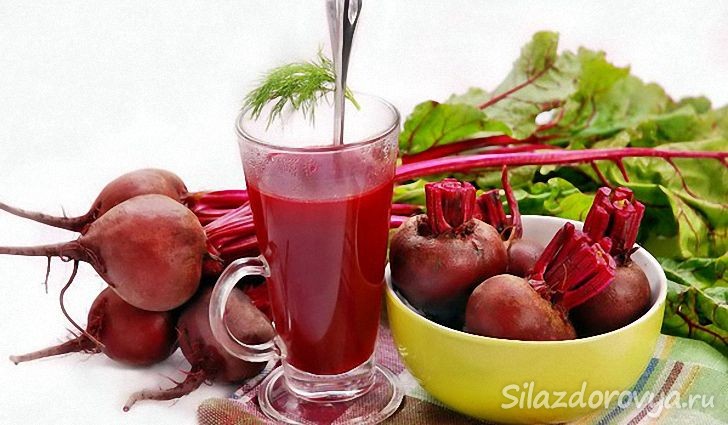
In addition to the heat treatment of products, the absorption of a useful element is prevented by the abuse of salt, the abundance in the diet of sugars and starch from flour products.
Once in the blood, the inorganic variety of the macroelement accumulates on the walls of the veins of the abdominal cavity and anus, where blood flow is reduced. Insufficient lumen of blood vessels provokes the development of tumors.
Liver, cleansing the blood, directs the inorganic element in gall bladderwhere it gradually accumulates. The remains of an inorganic variety are carried by blood to the kidneys, bladder, and sand and stones are formed.
Beet juice contains only 5% calcium and a significant amount of antagonist element sodium. Acceptance of beet juice cleanses the blood, dissolves calcium deposits on the walls of blood vessels, causing an increase in the lumen, a decrease in blood pressure and pressure on the heart muscle.
In addition, the juice contains chlorinestimulates the lymphatic system, cleansing the liver, gallbladder and kidneys.
Freshly prepared beet juice before drinking to withstand room temperature two hours to remove volatile compounds. Initially, cleansing diluted with carrot or apple juice. Take every day 250-300ml of beet juice.
With a different treatment regimen, take a glass of a mixture of beet, carrot and cucumber juices three times a day.
To eliminate excess uric acid, it is helpful to take juice three times a day. lemondiluted with half a glass of water.
